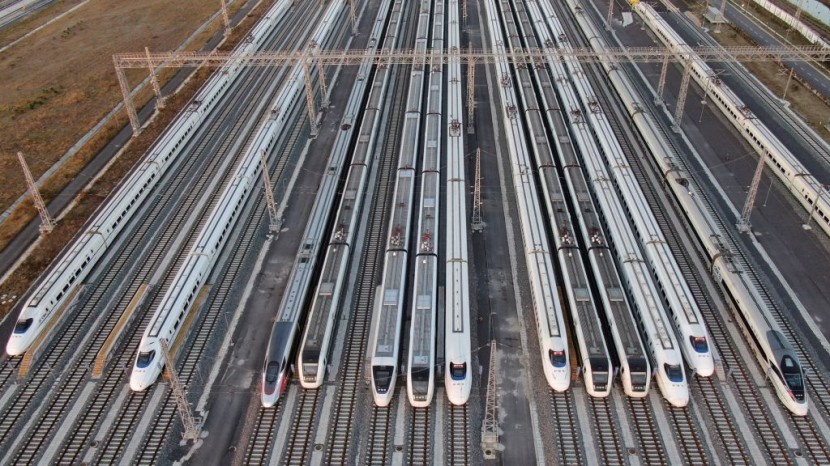
China's nuclear train could be another move to befuddle the US by launching ballistic missiles added to the systems to deploy them.
A study was conducted to see the viability of using the rail system as a military platform that could work. The conflict in Ukraine is making Beijing move ahead in making plans to foil the US in Asia.
Chinese Militarized High-Speed Rails for Counterattack
Yin Zihong, an associate professor of civil engineering at Chengdu's Southwest Jiaotong University in Sichuan province, is spearheading a group of specialists collaborating on a federally funded national research study, reported the Eurasian Times.
He and his colleagues reported their findings a week ago, asserting that a high-speed railway would beat a heavy-duty industrial railway in some situations, which was initially believed to be more fit for the job, noted SCMP.
In addition, high-speed railways run more quickly and smoothly than heavy-haul railways meaning that military vehicles would have more mobility, safety, and camouflage on high-speed tracks.
Technical Roadblocks
Ballast, such as tiny pebbles and gravel, absorbs shocks on a conventional railway. More ballast is required for a heavy haul line carrying ore and coal.
A 2020 study by researchers shows that an ICBM launch should generate a powerful shock wave that might go as far as 8 meters (26 feet) beneath, far beyond the strength of most rail lines' base structure.
China's high-speed nuclear train can reach 350 km/h (217mph). They're compact, with up to 16 cars totaling around 60 tons, heavy with ballistic missiles as protection.
They employed data from previous Chinese military missile tests and computer simulations to simulate the operation of a high-speed rail launch system.
The research indicates that extra strength should not be needed for a high-speed railway because the rails are installed and fixed on concrete, and ballast as a buffer zone is not essential.
According to publicly accessible data, the architecture of some Chinese high-speed railway substructures is as deep as 60 meters.
The researchers' modeling showed that most of the disturbances created by firing a missile would be localized to shallow portions of the rail infrastructure, where damage may be identified and corrected more readily.
Risks in Using High-Speed Rails To Launch ICBM
Specific extremely low-frequency vibrations produced by the launcher may pose a risk to surface elements such as the rail and concrete slab, remarked the researchers.
While a high-speed train can be designed to withstand a launch, the stress created by the launch would mostly pass down to the rail and its foundations, causing infrastructure damage and rendering it dangerous and unusable, per Yahoo News.
Military experts contend that such a rail-based ICBM launch system can survive the initial wave of nuclear attack more than conventional land-based systems like silos and trucks. According to some assessments, a train could also transport as many missiles as a nuclear submarine.
However, it is uncertain whether or when the Chinese military might deploy a high-speed rail-based nuclear launch platform.
China tested the tube launch mechanism for the rail-mobile variant of their DF-41 ICBM in 2016, which entailed launching a DF-41 from a canister with a gas charge without igniting the missile's motor.
The nuclear train concept for deploying ballistic missiles is getting somewhere as Beijing moves to find innovative ways to carry its armament.
Related Article: Macron Says Biden's Remark That Putin Is a Butcher Makes it Harder To End the Ukraine Conflict
© 2026 HNGN, All rights reserved. Do not reproduce without permission.








